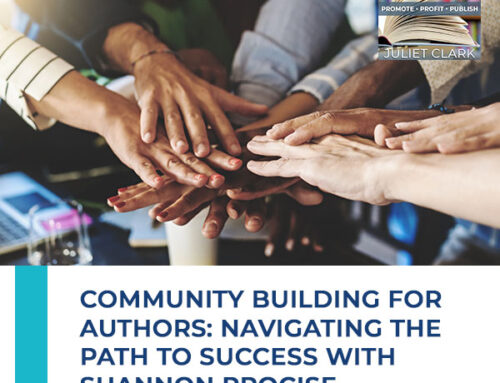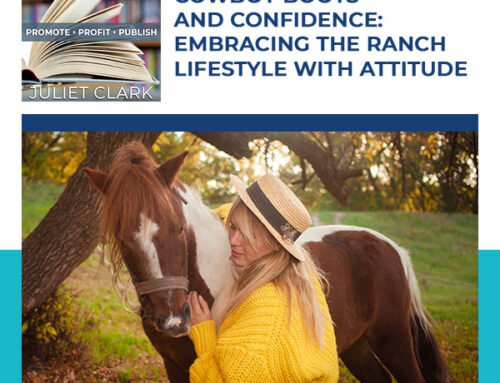
—
Watch the episode here:
Listen to the podcast here:
Designing That Super Tight Brand with Ellen Melko Moore
Our guest is Ellen Melko Moore and she helps six and seven-figure coaches, consultants and therapists. She helps them create next level offers that kill it in the marketplace through her SuperTight specialization and contagious articulation. An escaped academic, her superpower is helping her mission-minded clients generate narratives for world-class thought leadership.
Welcome, Ellen. It’s great to have you.
I’m very excited to be here.
We’re going to talk a little bit about branding and marketing. Branding and marketing for those who are starting out and getting their programs and businesses branded. A lot of what we see here are people who bring those in and they’re ready to go right to the book. They bring that book in because they think that’s going to sell those products and services. Ellen and I are going to share that that’s not the sequence. That’s not what’s going on. Tell us a little bit about thought leadership. That’s where you’re helping people get into those great programs and get that branding. Tell us a little bit about what that brand has to do with thought leadership.
A lot of people, even people who are very successful in business tend to collapse brand and marketing as if they’re exactly the same thing. They’re part of the same thing. One of the ways to think about it is that brand is the story of your offer and marketing are the different ways that you share that story. Most of the folks I work with have a successful offer. They’ve done something to begin that’s working, either to get them private clients, if there are therapists to fill up their office, if there are B2B consultant to have built up that business reputation. The whole point of brand is it is your reputation and what matters so much for thought leadership is that you have a brand that is designed for someone. As the marketing god, Seth Godin likes to say, “It’s not about you’re going to invent this offer and then find the person that’s going to fit. It’s about finding the person that you want to be with, who’s got what we call the ATP, Ability To Pay, as well as the other qualities that you’re looking for.”
That crucial person who’s looking for you right now, you don’t have to educate them so much in all this stuff. They’re already in the know. With brand whenever you want to go up to another level, whatever that next level of success is for you. Whether you’re getting started or you’ve been successful but now you want to do something like a book for example. You need to look again at how tight the offer is. A SuperTight offer is one that is designed for a very specific person. I always feel like when you go to the trouble of making someone else special and you create a world for them with your offer, with your social media, with the way you communicate in the marketplace. If they feel special because you’re making them feel special, they’ll send that love back to you.
It's always worth it to reexamine a brand in the sense of who is the brand for. Share on XOften, when people are getting started either with building their practice or their clients for the first time or they’re going to the next level, such as digital thought leadership. They’re going to do an online course or they’re going to do advanced consulting. They rely on whoever is around them or whoever are in their immediate vicinity to think about who this offer is for. We find again and again, even with very successful people, it’s always worth it to re-examine the brand in the sense of who is the brand for. The most successful brands I’ve seen are very good at doing that. It is not something that’s designed for everybody. To complete as far as thought leadership, if you want a faster and easier path to thought leadership, you want to keep looking at your audience, your client, your student or your reader. If you can understand them and you go to the trouble to understand them in a way that nobody’s ever quite gone to that trouble before, you can then create a brand for them that will seriously impact your dollars and impact their health in whatever way that you’re trying to make a difference.
The reason that Ellen and I connected is we have a mutual client. What we do with the assessment marketing is a part of what you’re talking about. It’s connecting in advance. The more you know about that consumer, the better you are to build the brand to serve them. That’s what it’s all about. That’s what you and I see so much out in the coaching world. Somebody has a great idea, they put a program together and then they go out. They look for that person that is right for them, instead of doing that research in advance and cultivating that audience and validating them.
I stumbled across this with my first business being extremely successful. I had been an academic. I was an English professor and I didn’t want to stay in academia. I wanted to know if there was anyone else in the world who would pay for the fairly useless skill of reading and talking about books. I created an offer for people in book clubs and reading clubs. At the time nobody else had paid that much attention to them as a unique consumer of books and what they were doing with books. Our rise was very fast and we got to do all kinds of wonderful things with that. It was because I didn’t spend a lot of time thinking about, “Why are we special? Why am I special?” It was all about why is this client or why is this reader special? Adjusting everything for their world and learning to speak in the language that connects with them, what they’re worried about and what matters with a book group, all that stuff.
I did it because I had to, only in the sense that I had degrees from three very expensive universities and a massive amount of student loans. It had to work financially for me because I knew I wasn’t going to take that traditional academic path. That’s where I stumbled upon it. Again and again, I’ve seen people rush because there’s a narrative that says, “You’ve got to start marketing.” You need to build up an audience in order to sell anything, but then people jump to that so quickly before they’ve figured out who the offer is for. That’s where I see a lot of people get stalled because then they’ve got something like if they’re a coach, they’re saying things like, “It’s for women in transition,” or something like that. Women in transition is not a tight enough market to be able to speak to.
You said something very important in there about many branding companies looking for that “Why are you special as an individual?” I was looking at a post on Facebook and it’s somebody who had a workshop and she was talking about all of these things she created. All I could think of is “I” instead of what about that audience you’re supposed to be serving? What about them? That is why it is important to get SuperTight on it and get into that consumer because it’s not all about you. It’s about them. It’s about who you’re serving.
That’s why your quizzes and what you do to help people think about this is so essential. People feel pressured because now you’re going to be an entrepreneur. You’re going to have your own business. The automatic assumption is there has to be something special about me if I’m that entrepreneur or that founder. I’ve got to tell you all these things about my background, what I’ve created, what I’ve done and my education. We check something. We have a meter. When we look at people’s websites and we look at their social, we spend a lot of time analyzing how much of it is that “me” language or “I did this, I did that.”

Super Tight Brands: People jump to marketing so quickly before they’ve really figured out who the offer is for.
I don’t think people are doing that because they are selfish or self-obsessed. It’s because of the pressure to create oneself as special and unique and you offer special and unique. It’s so much easier when you start with who is this person you want as a client and reader and then look at what else does that person have to choose from. That allows you to create a differentiator that comes across as a SuperTight and highly contagious brand versus the pressure of trying to figure out what’s different about me. That’s a lot of pressure and I’m not very good at that. I’m not good at talking about what’s different about me.
I do have a value base about what is different about me. It’s the action.
I don’t think that’s so much about you. It’s about the result that you’re going to produce.
Not only the result that we’re going to produce, but it’s when you compare me to other programs, look at do you want action or do you want theory? Many of them out there are theory, instead of, “We’re going to move the ball forward at a very rapid rate.” When you’re an entrepreneur and time is money, that’s important. What is the difference exactly between that market and that brand? You talked a little bit about it, but could you separate it out into which pieces go where?
If you think of brand itself as your reputation or if a brand has a reputation, it means that you don’t create your own reputation. Marketing is the stuff you put out there. If I were to say, “I’m a great branding expert and I did this and I did that and you’re SuperTight,” that’s me marketing. For somebody else to talk about it and say, “I’ve got these results from SuperTight brand.” That’s a brand. If you think of the brand and the SuperTight brand as this highly focused concept that’s designed for a specific audience, marketing is the way you tell people about that concept. It’s your website and your social. It’s how you talk to people. It’s wherever you show up and whatever you say. The other fun thing about brand versus marketing is brand is you’re on your worst day as well as your best day. Brand is if you’re a high-cost transaction to work with, despite your brilliance.
Brand is there are the negative pieces in it as well as the positives, whereas marketing tends to be all positive. Here are the wonderful things that we can do for you. The reason it matters is that when you’re out there marketing and telling people about your offer and communicating with your people. If you haven’t done the work to figure out what is it that you want them. Even if they just see you once and they’re not ready to buy or they’re not ready to follow or whatever, what is it that you want to leave them with? What is it that you want them to know about what you’re doing or about themselves even better? Saying, “Ellen is great at SuperTight brand,” is marketing. If Juliet says, “Ellen is great at SuperTight brand,” that’s brand because I’m not saying it myself.
The automatic assumption is there has to be something special about me if I'm that entrepreneur, that founder. Share on XWe do see it out in the coaching space. We see a lot of people who are good at self-promotion that doesn’t deliver results and we all know who they are.
Their marketing might be good, but to those in the know, the brand is not good.
They’re not getting the results. They don’t articulate deliverable. People think they’re getting much more than they’re getting because of those deliverables. They’re great at telling you how great they are and very effective at it. That’s a great way to look at that.
It’s always good if you want to accept someone’s offer if you’re looking for your next business coach or your next marketing coach or your strategy leader. Somebody who’s helping you with the fundamentals of numbers, whatever it is. You want to go and find out what other people are saying and what the results have been. Another thing I see a lot is that coaches, especially people who are trying to build up on something, they will tell you about all the results they’ve achieved. A good friend of mine who’s a social media rock star hired a business coach. This business coach had worked with mostly people in real estate and finance. She didn’t know how to help my friend who’s a social media star build her next level offer. She had a system that worked for a different kind of person. $10,000, $15,000 went down the tubes. One of the things I see a lot is by the time people come to me, they have spent between $40,000 and $50,000 on coaching, usually around marketing and strategy. The brand itself is not specialized enough. It doesn’t occur as remarkable and then there’s a breakdown.
I end up probably half my market are not beginners. They are people who have spent an extraordinary amount of money and not done the basics. There are a lot of people who want to jump in the middle and there are some very big basics that have to be done as a foundation.
There are a lot of weeping and crying over here because people will come in with these beautiful websites that they’ve paid all this money for. It’s not like we have to redo the entire thing, but we have to rethink the entire thing because of who that website is designed for or not. People will resist that. They will say, “I’ve spent all this money on this property. I’ve spent all this money on this platform.” It comes down to if you want that next level of success, you need a specialized offer. Right now, this is not communicating as a specialized offer. It might be one but it’s hard to tell.

Super Tight Brands: If you want that next level of success, you need a specialized offer.
I hardly use my website at all because people don’t go looking for the website unless they know about you first.
They’re not searching for that website unless they’ve seen you somewhere else first.
There’s a misconception out there that I need a website first. You can run on landing pages while you’re getting this all up and running in the right way. Probably it’s a more inexpensive way to go because then you’re getting the professional help you need with the branding for the real product versus what you have out there now.
You get a chance to practice. I practice a lot. Just because I help doing this for other people doesn’t mean I’m necessarily good at doing it for myself. I’ve worked with some very high-level people who have come off some huge successes that people have heard of. They’re not good at doing it for themselves either. It isn’t about one’s personal failing. It’s because brand is what someone else sees, not what I see. I love landing pages. I love LinkedIn profiles. I love places where I can practice my articulation to see whether I’m connecting, “Am I getting the results I’m trying to get here?” That way I can start to tell what’s landing. Often the things I thought were so fantastic and wonderful don’t land. The things that I wrote in a hurry to get from here to there might be the unexpected thing that works for people. I’m a big believer in practice and get outside help from somewhere.
I have the same thing. I hired copywriters. I hired designers because I can look at your stuff all day long and pick and choose out, “Here’s the gap. This is where we need to go,” but my own, I have a big blind spot. You said something very important there that bears repeating. “It’s not what you think about your brand. It’s the perception of the people on the outside looking in.” Can you speak to that a little bit more because that’s what’s important?
If the simplest explanation of brand is reputation, a reputation is created by other people by definition. The definition of brand is not created by you. We may have some choice in how we guide and direct it, but brand is all in the eye of the beholder. It’s not up to me to say what my brand is. I can say what I hope it is. I can say what I’m trying to communicate with it. Ultimately, it’s always decided by your audience, your colleagues and it’s happening all the time. When you’re on Facebook, LinkedIn, YouTube or whatever it is you’re doing, other people are making instant decisions about your brand. They’re not necessarily reading through all that gorgeous copy or whatever it is. If they’re the right person and you’ve landed it right, they will read through that stuff.
The super tight brand is this highly-focused concept that's designed for a specific audience. Share on XA lot of these decisions are happening instantaneously and subconsciously based on if I’m your intended consumer, do I feel special around you? Do I feel like you understand my world? If I feel understood and uplifted and not just a bunch of crap like a bunch of inspirational, “You’re the best and your heart-centered idea is going to set the world on fire.” If I’m helping you get through some of the tough parts of that, you’re going to stick around. Every year I found business improves the tighter I create my stuff for a specific person. It’s like a dog whistle. Your brand is a dog whistle and only certain dogs can hear it and you want it to be like that. You want only a certain kind of dog to hear. Brand becomes more of a conversation because people are coming back to hear more. They want to know what’s happening next. They start to adjust to some of your ideas. By definition, you are not the ultimate creator of your brand. Your audience creates it by what they see.
Who is your target client? Why do they come to you?
They are six to seven-figure, B2B consultants, mindset coaches and successful therapists. Most of these people have already built a successful business. The other thing they have in common is these are folks with a very high level of mastery coming in. They are very proficient at whatever is their offer, whether it’s an offer of personal mindset help or a professional offer. They’ve already been successful. They’ve built a business that works, but now they want to next level it. That’s what we focus on at SuperTight is this next level. What’s cool for us is we can create a narrative for a much more sophisticated client or customer. By sophisticated I mean we don’t have to start all over again with Business 101. They’ve gotten some of that. In order to create a digital course, let’s say they’re very popular in their area, but now they want to sell a digital course or they’re going to do an advanced consulting offer. If somebody who had a B2B offer out there that was $25,000 but now it’s $250,000, what changes there?
People also do come quite a bit who are looking for that book to create the next level of platform for them. The book is not going to sell the course. It does other things. After a while, when I started this business, I worked with tons and tons of brand-new people and a lot of startups. I still like doing that and I always have a couple of people on the roster who are like that because it’s fun to be there at that very beginning. On a level of what I want these people to achieve is world class thought leadership. If I’m going to take them to world-class thought leadership, I need to know that they’re coming in with a certain amount of sophistication and experience. Also, world-class thought leadership is not for everybody. Not everyone cares about that. It’s either they want the money, but they don’t care about the world-class part. It’s not necessary for them to be a thought leader on that level.
I like working with smart people who have a high level of generosity as well as genius. Those are people who want a bigger impact and a bigger message. They know that to take it to the next level something’s going to have to change. They don’t always know when they come in that it’s brand. They don’t always know when they come in that it’s an audience. A lot of people, when they first call they’ll say, “I’m feeling bored of this. It’s working but I’m getting irritated by it. I know there’s something more for me, but I don’t know what it is.” Often that’s when people have outgrown a brand or an offer. It didn’t mean they did anything wrong. They have evolved and moved on.
I love what you said about that they’re very generous. You can feel the difference between somebody who’s in it for the money and someone who’s in it because they want to serve and create an impact. I’ve had some of my clients come and say, “I interviewed with somebody and fifteen minutes in, he’s hardcore selling me and I don’t feel like he listened to me.” You can tell the difference when you get in those situations. That’s where you don’t want your brand reputation going downhill when people are talking like that about it.

Super Tight Brands: Really smart people who have a high level of generosity, as well as genius, are those who want a bigger impact and a bigger message.
It’s a pressure on people if they’re feeling any scarcity, which lots of people are these days. There’s an idea of “I just met you, so I need to jump down your throat and tell you everything about my world over here and why you need it,” when I haven’t even found out anything about you. We’re starting to see it in the books that are coming out from some of the top people in this world who are Seth Godin and Tim Ferriss. There’s a lot of people who are starting to focus on what women tend to do a little bit better, which is developing a relationship. If you give people a moment to come in and you can give them some value and help. Whenever I do a video or a blog post, I always think, “In this two-minute video or this one page, what am I going to do to shift your perspective?” You don’t have to like me or like everything about SuperTight brand. If I can do something in that short amount of time that gives you a shift in perspective that lets you see something, that’s valuable.
I give that away all day long because the people I like and the people I follow do that as well. We’re seeing some different ways or some old ways of doing business in the madmen model of advertising. We see some of those starts to fade away. What’s funny is we see a lot of these top people in marketing talking about building relationships. The good thing is a lot of our people already know about that inherently. That’s how they are. Then the trouble comes because now they’ve got to have a business and they’ve got to be successful. They try on some of these other ideas of the fast sell and “Let me use all the weapons of influence to convince you it’s so great over here and I’m going to change your life.” It then gets awkward and rocky. I always look for genius and generosity. Those are the two things I’m always looking for, not just in clients but anybody I’m working with and talking to for any reason.
If you are in a position with your company where you have to convince someone, you’ve already lost. You’ve lost the empowering piece of this. Allowing people to understand what you do and how it integrates with what they do and meeting them where they’re at is what this service is all about. When you do that, the convincing goes out of it. They either know or they don’t know. Most of the time that comes down to, “Do I like her or do I not? She’s incredible and I will achieve those goals or will I not?” That’s where that money piece comes in when you feel like, “That person’s pressuring me to give the money and not telling me what I’m going to get in exchange.”
If you’ve spent all this time thinking of your brand is your color or your logo. Another thing I get people freak out all the time are taglines and headlines. It’s nice when all the stuff are lined up. That’s a lovely aspect. It’s important to have a visual congruent and all that stuff. It comes down to the liking and trust. Liking and trust don’t happen immediately. You have to give somebody a minute. For me, the switch was in the early days I had to convince people. I had to demonstrate something. Having done it enough, there are demonstrations out there. There are plenty of people you can go talk to about their experience.
More than that, I want people to feel safe. I want them to feel special. I want them to feel when they come into my world because my world is not designed for every consumer. It’s not designed for every coach. It’s not designed for every therapist. Thinking about the ecology that you create with whatever you’re doing with your brand and your marketing, whether it’s a Facebook group, whether it’s how you’re on LinkedIn, YouTube, Instagram, whatever it is. What is this world you’re creating? If people can come in and get a chance to like you and trust you and see that it’s solid, by the time you do a discovery call or a sales call, 90% of that work is going to be done. If they’re interested, they’re going to have logistics questions and you can answer them. You shouldn’t be on a call trying to persuade somebody that this is the thing.
Ellen, where can we find you if we want to talk to you more about this topic?
I’m active on LinkedIn these days because I’ve been having a lot of fun over there getting to connect with people who are a few levels up the food chain for me and learning from them. Ellen Melko Moore on LinkedIn. SuperTightBrand.com is the website. We also have a Facebook group, it’s called SuperTight Brand: World-Class Thought Leadership. That’s something you can apply to join if you are feeling so inclined.
Thank you so much for being with us.
I enjoyed it. Thank you so much, Juliet. Thank you for the huge differentiated and wonderful service you’re providing. By what you’re doing and how you’re having people think and look, it is going to make such a difference to people’s income, to their dreams and to their ability to have why they did get into this dream business. What was it for? You’re one of the people who’s doing it right and making it possible for people to have that by giving them the shift, the deliverables, the tools. It’s incredible. I’m super flattered to be on here with you and it’s a privilege to know that you’re out in the world creating this.
Important Links:
- SuperTight
- Ellen Moore on LinkedIn
- SuperTightBrand.com
- SuperTight: Brand World-Class Thought Leadership – Facebook group
About Ellen Moore
 Ellen Melko Moore helps 6-7 figure coaches, consultants, and therapists create next level offers that kill in the marketplace through “Supertight” specialization and contagious articulation. An escaped academic, her superpower is helping her mission-minded clients generate narratives for world-class thought leadership.
Ellen Melko Moore helps 6-7 figure coaches, consultants, and therapists create next level offers that kill in the marketplace through “Supertight” specialization and contagious articulation. An escaped academic, her superpower is helping her mission-minded clients generate narratives for world-class thought leadership.
Love the show? Subscribe, rate, review, and share!









Leave A Comment